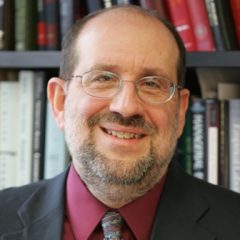(p. A7) For years, the United Nations Relief and Works Agency sent millions of dollars each month to Gaza to pay employees and support hospitals, schools and other infrastructure, according to a new lawsuit. The money was wired from New York, where the agency has an office, to the West Bank, where financial institutions loaded some of that cash onto trucks to be driven across Israel to Gaza.
The suit, filed Monday [June 24, 2024] in federal court in Manhattan, said some of those dollars ended up funding the military operations of Hamas, the Islamist group that has controlled Gaza for nearly 20 years and has pledged to erase the Jewish state. The money trail is at the heart of the case against seven current and former top UNRWA officials who are accused of knowing that Hamas siphoned off more than $1 billion from the agency to pay for, among other things, tunneling equipment and weapons that aided its attack on Israel on Oct. 7.
. . .
UNRWA was created in 1949 and is funded primarily through donations from U.N. member nations. The United States has long been the largest contributor, giving $371 million in 2023, nearly 30 percent of the agency’s contributions, according to a congressional report.
. . .
The suit relies on a long and tortuous trail of cash that stretches from Manhattan to the Middle East.
. . .
The complaint says the group used the money “to buy via smugglers its weapons, ammunition, explosives, construction materials for the tunnels and rocket-making supplies.”
. . .
The complaint does not reveal what evidence the plaintiffs will present to prove with certainty that UNRWA money in Gaza was used to finance the Oct. 7 attack. Nor does the complaint provide specific details to support the claim that Hamas controls the currency exchanges.
But a report by Key Aid Consulting for UNRWA in 2018 said that the exchanges are open to “leakage,” which includes “misappropriation, fraud, corruption, double-counting and any irregularity considered as a diversion of cash grants or vouchers from legitimate uses.”
For the full story see:
(Note: ellipses, and bracketed years, added.)
(Note: the online version of the story has the date June 24, 2024, and has the title “Hamas Skimmed $1 Billion in U.N. Aid for Weapons and Tunnels, Suit Says.”)

